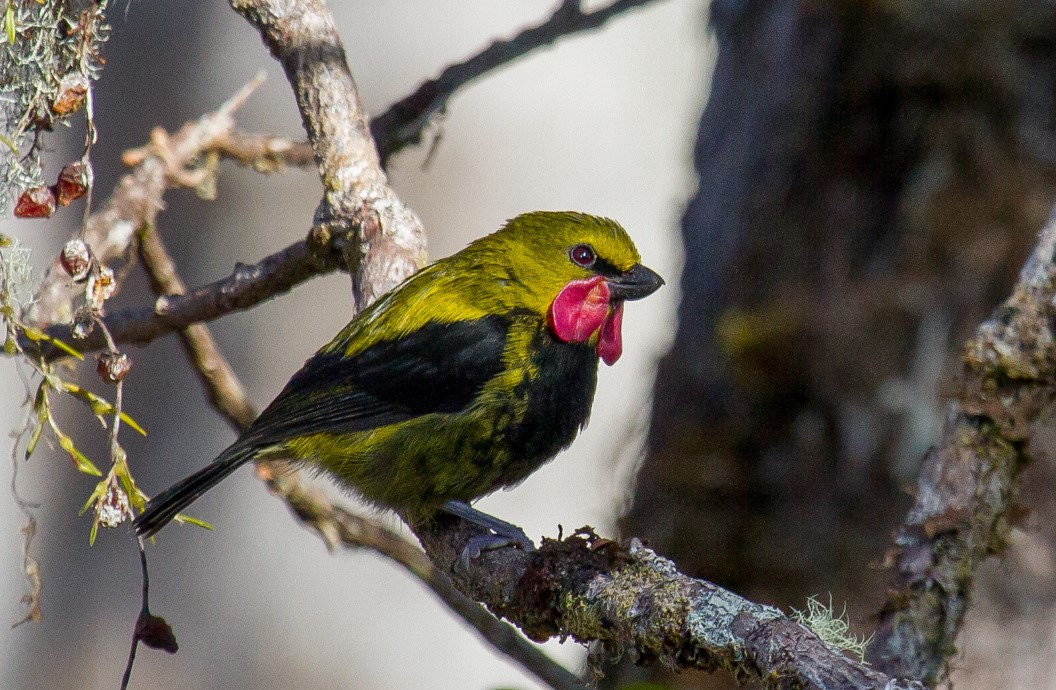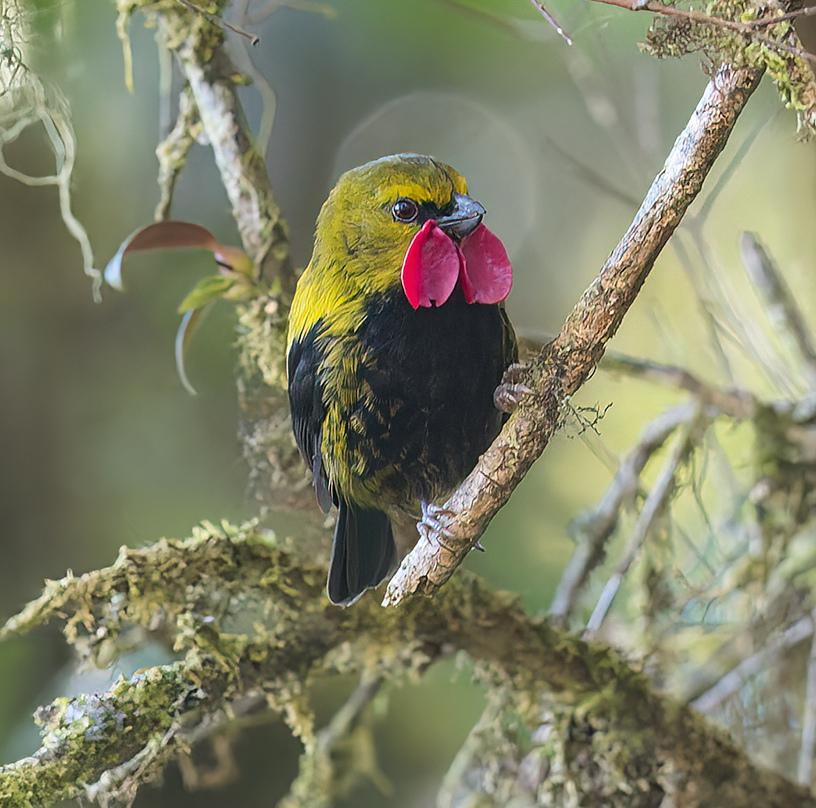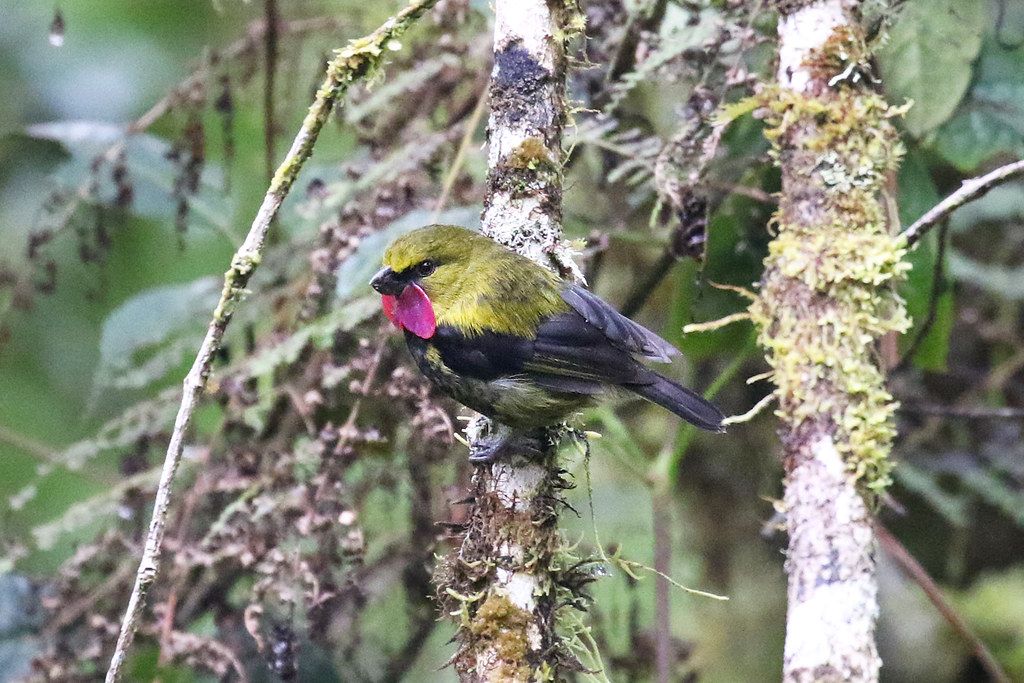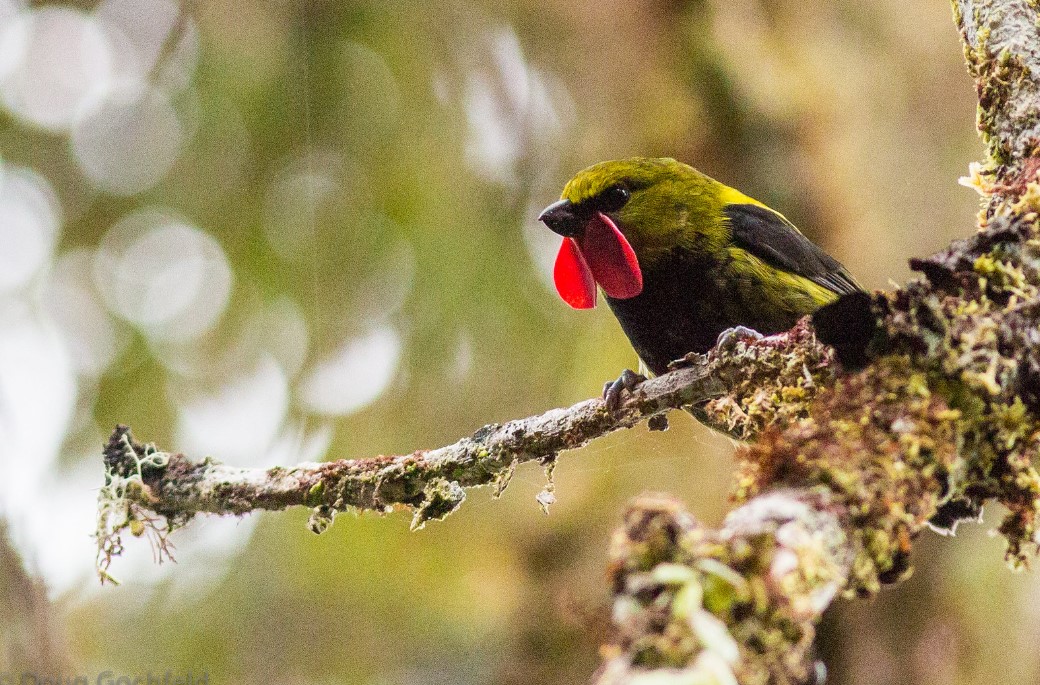The Wattled Ploughbill is a small, distinctive bird native to the montane forests of New Guinea. It is the only member of its genus, *Eulacestoma*, and is easily recognized by its unique features. Males have a striking appearance with a black body, a bright yellow belly, and vivid red wattles hanging from the base of their bill. Females, while less colorful, still stand out with their olive-green plumage and a yellowish underbelly. Both sexes have a short, stout bill that is perfectly adapted for their feeding habits.

This bird is named after its peculiar bill, which it uses like a plough to dig through leaf litter and moss in search of insects and other small invertebrates. The Wattled Ploughbill is a solitary bird, typically seen alone or in pairs, foraging quietly in the dense undergrowth of the forest. It is known for its secretive nature and can be difficult to observe, often staying hidden in the foliage.




The Wattled Ploughbill’s habitat is limited to the cool, humid montane forests of New Guinea, particularly at elevations between 1,500 and 3,000 meters. Its preference for such specific environmental conditions makes it sensitive to habitat disturbances, though currently, it is not considered to be at immediate risk. However, ongoing deforestation and habitat degradation in New Guinea could pose future threats to this unique species, emphasizing the need for conservation efforts to protect its natural environment.